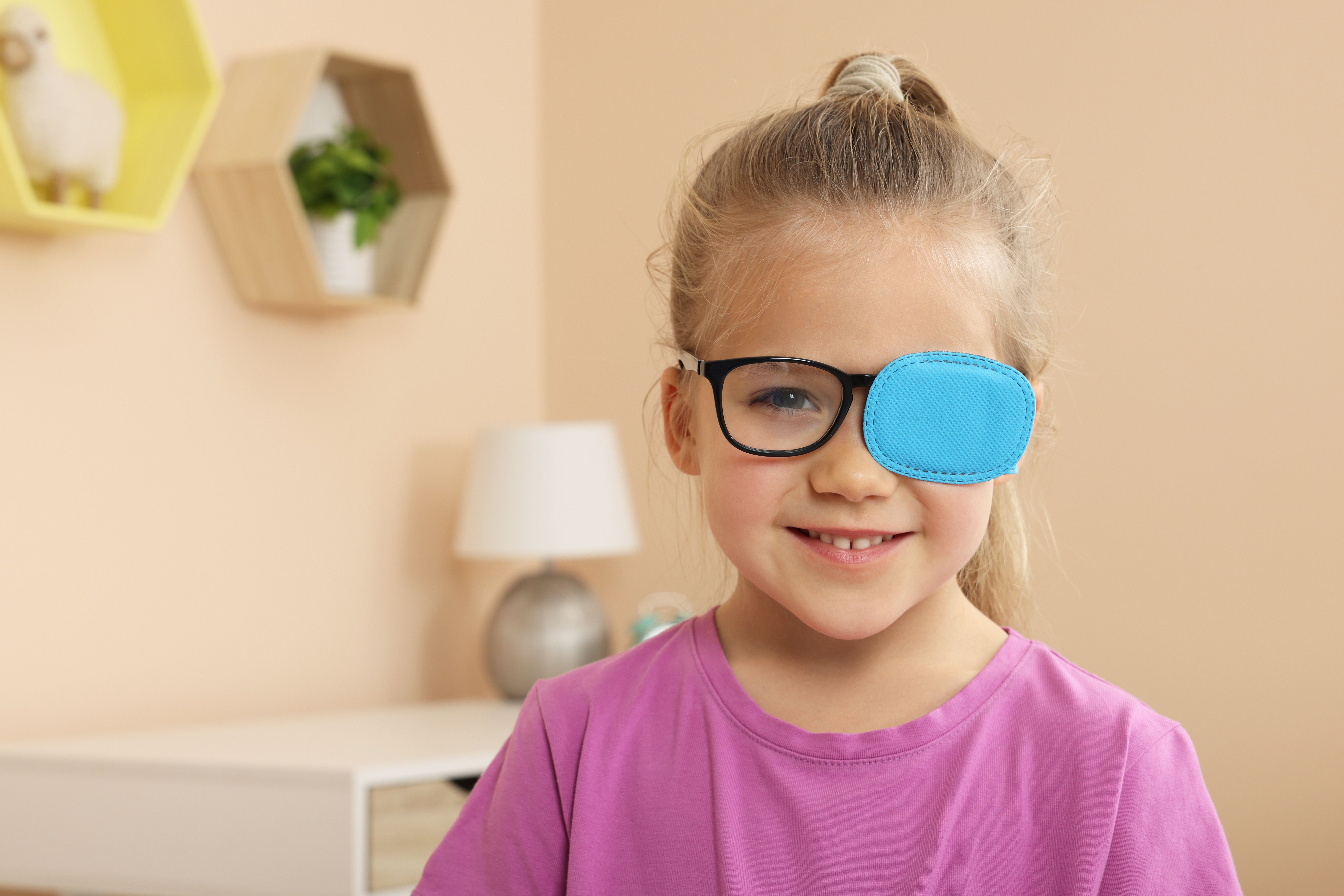News
Article
Family, Child Functioning Not Negatively Associated With Occlusion Therapy
Author(s):
Findings from a study with a limited sample size suggest that patching is both effective and does not impede development in children who patch for at least 120 minutes each day.
Quality of life and motor skills are not negatively affected by prescribing patching for children with unilateral congenital cataracts (UCCs) while they are in preschool, according to a study published in JAMA Ophthalmology. Patching can be prescribed in these children without negative consequences on their development.
Children born with a significant UCC are usually treated through extraction and correction of a refractive error. Poor vision in the affected eye could result from either not treating UCC or treating it incorrectly. Occlusion therapy could have negative effects in children with UCC due to the patching for half of their waking hours for 6 years, but studies that have found this have not focused on children with UCC specifically. The present study aimed to assess the psychosocial and developmental outcomes for children who were treated for UCC through patching.
Young girl with eye patch | Image credit: New Africa - stock.adobe.com

The Infant Aphakia Treatment Study (IATS) was used for its data, as it was a multicenter, randomized clinical trial that centered on the treatment of UCC. The primary end point was visual and adverse outcomes in children who received an intraocular lens at cataract extraction.
An adhesive occlusive patch was used for the eye that had cataract extraction starting at the second week after the surgery. Children needed to wear the patch for 1 hour each day until the age of 8 months, after which the time increased to 50% of waking hours until the child reached age 5 years. After that point, children continued patching at the doctor’s discretion. All children had the amount of patching done assessed throughout the first 5 years of their life. The amount of patching time was averaged across the assessments. Children whose eyesight was 20/200 or worse after 54 months were analyzed for this study (N = 47).
Family and child functioning was assessed through stress associated from the parenting role, gross and fine motor development, problems with child behavior, and self-perception. A questionnaire was given to caregivers to assess their stress from parenting using the Parenting Stress Index (PSI) and the Ocular Treatment Index. The Child Behavior Checklist (CBCL) was used to assess child behavior from ages 4.25 years to 10.5 years. Motor development was assessed from 54 to 55 months of age using the Movement Assessment Battery for Children-Second Edition (MABC-2). A child’s self-perception was assessed using the Harter Self-Perception Profile for Children.
A total of 42.5% of participants were female and 25.5% reported patching for less than 15 minutes per day. Only 17.7% of the children reported patching for more than 6 hours per day, 51.1% for at least 120 minutes per day, and 23.4% for 16 to 119 minutes per day.
Poorer VA was found in children who patched less, even as the patching did not differ according to treatment. Of the 25 children who had a VA of 20/800 or worse, only 28% patched more than 120 minutes per day compared with 77.8% of the children with a VA of 20/200 to 20/400. It was less likely for a child to be patched for 120 minutes per day if the child was a girl vs a boy (40.0% vs 59.3%). Public vs private insurance did not affect the length of time a child was patched.
Mean reported patch time was not associated with parenting stress after 54 months. Children who had reported patching for at least 120 minutes per day did not have child behavior problems or observed motor skills that differed from children who wore a patch for less than 15 minutes per day, with the difference in CBCL being 5.1 (95% CI, –12.22 to 22.4) points. The MABC-2 had a similar result, with the difference between the 2 groups being –1.4 (95% CI, –3.2 to 0.5) points. Self-perception also was not affected when the child was 10.5 years of age. Mean stress score had a nonsignificant difference after adjusting for both gender and insurance status (11.0 points; 95% CI, –4.5 to 26.5) when comparing parents who reported minimal patching vs parents who reported at least 120 minutes of patching each day.
There were some limitations to this study. The sample size was small, and self-reporting was used for the analysis of how long each child wore their patch, which could introduce recall bias. In addition, extensive patching was defined as those who patched for at least 2 hours per day, which was less than the recommended amount of patching, and reasoning for the amount of time patched was not collected. Lastly, adherence data from months 42 to 54 was not found in all participants.
The researchers concluded that patching is still a viable treatment method for children, as it does not affect their development in any meaningful way. Parents also did not have increased stress levels due to patching, which indicates that patching is not only safe for the child but should be easier to implement for the parents.
Reference
Drews-Botsch C, Cotsonis G, Celano M, Hartmann E, Zaidi J, Lambert SR. Patching in children with unilateral congenital cataract and child functioning and parenting stress. JAMA Ophthalmol. Published online April 18, 2024. doi:10.1001/jamaophthalmol.2024.0800
Newsletter
Stay ahead of policy, cost, and value—subscribe to AJMC for expert insights at the intersection of clinical care and health economics.





